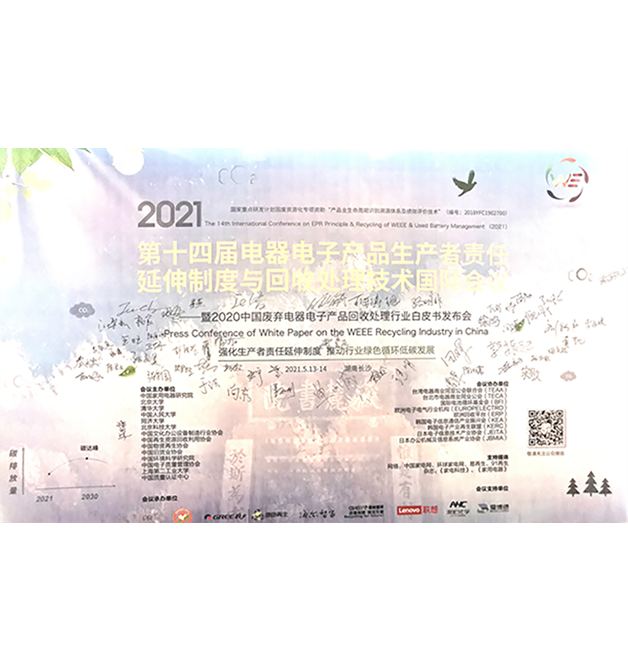Green Product
Following the principle of "Reduce, Reuse, and Recycle" that defines the circular economy, we have fulfilled our environmental responsibilities throughout the whole product life cycle in strict accordance with the requirements set forth in the ISO14040 Environmental Management—Life Cycle Assessment—Principles and Framework. The environmental principle of low carbon has been incorporated into the whole product life cycle from customer requirements, product design/R&D, raw material inspection, product processing, product sales, to product recycling and disposal.
Product Life Cycle Assessment
ZTE attaches great importance to its environmental performance in the whole product life cycle. In strict accordance with the ISO 14040 Environmental Management — Life Cycle Assessment — Principles and Framework, ZTE comprehensively enhances its capability of assessing the whole product life cycle, and sets up an expert team to analyze the life cycle of its major products based on 11 environmental indicators, including mobile phones, multimedia terminals, broadband network terminals, transport network equipment, and base stations. The 11 environmental indicators are raw material depletion (RMD), energy depletion (ED), water depletion (WD), global warming (GW), ozone depletion (OD), air toxicity (AT), photochemical ozone creation (POC), air acidification (AA), water toxicity (WT), water eutrophication (WE), and hazardous waste production (HWP).
The analysis of mobile phones shows that the greenhouse gas emissions, raw material consumption, and energy consumption of terminal products mainly occur in the production stage, which is the phase generating the most damage to the environment. Therefore, it is the key control point of our company to reduce the impact of terminal products on the environment in the production stage. To this end, ZTE updates its environmental targets and greenhouse gas emission targets every year. As for system products, the analysis shows that they cause the most impact to the environment in the use phase, and therefore the development of energy-saving products is the focus of the company's improvement environmental performance.
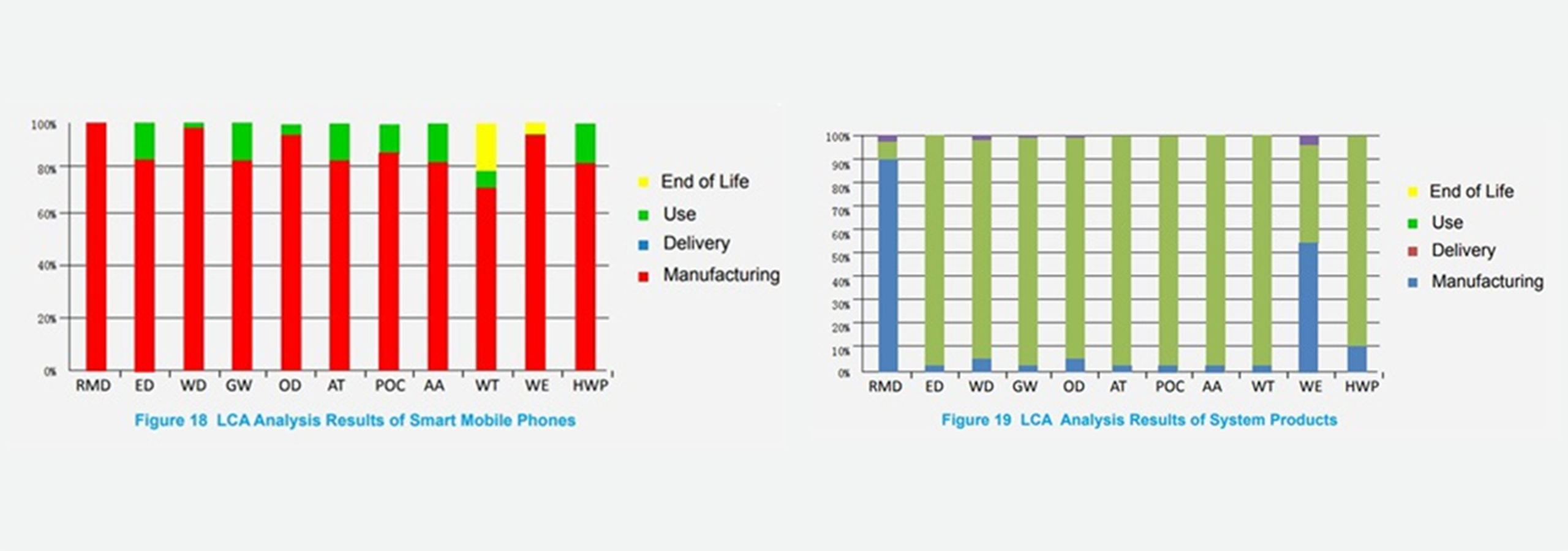
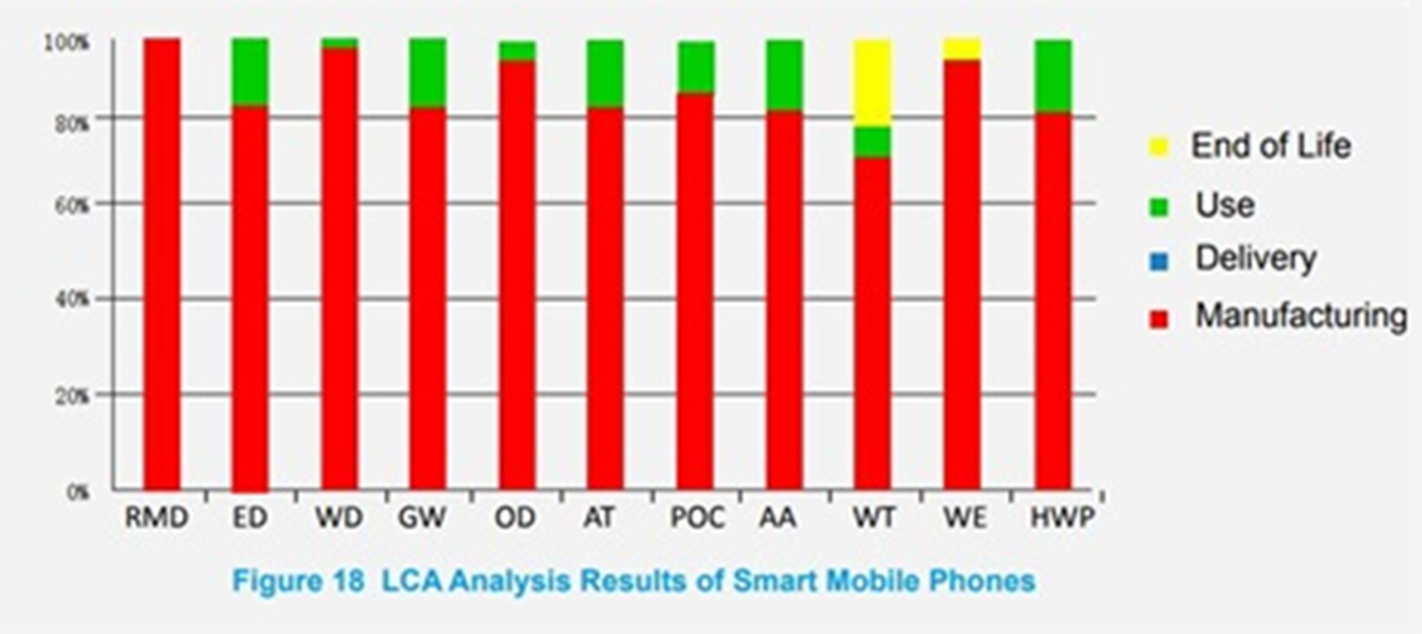
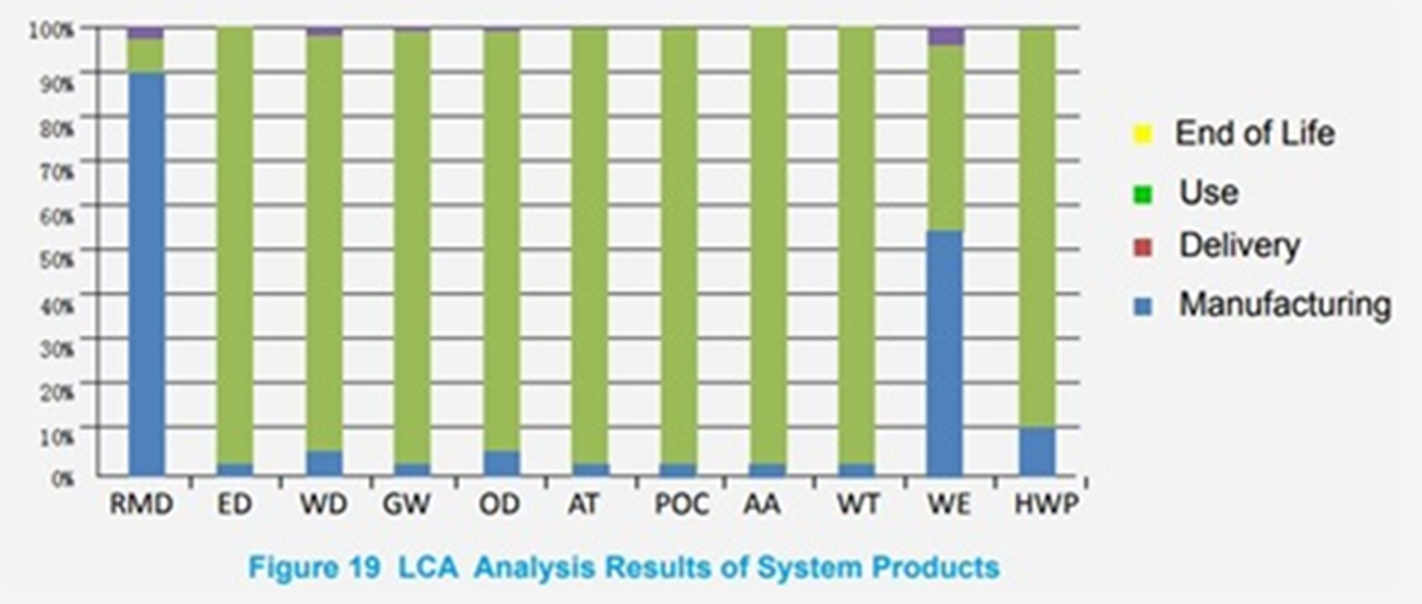
On November 17, 2017, the General Administration of Quality Supervision, Inspection and Quarantine of the People's Republic of China commissioned an expert team to conduct on-site assessment of the ZTE's OTN 7000 products. The assessment covered the whole process from product R&D, design, original material purchase, manufacturing and processing, functional testing, to packaging and transportation, as well as the management in terms of environmental protection, low carbon emissions, energy and resource saving, and ecological health. On January 9, 2018, the ZTE OTN optical cross-connects equipment got certified as Protected Eco-origin Product (PEOP), and ZTE became the first enterprise to obtain the certification in the industry.
Green Design
Even in the most initial stages of analyzing requirements for product design and development, we have identified the environmental laws and regulations and industry standards and customer requirements for our place of production and sale, including but not limited to environmental requirements related to hazardous substances, product recalls, energy efficiency, and packaging. High-durability materials are preferentially chosen to reduce the consumption of relevant materials.
By upholding the green concept of energy conservation and emission reduction, ZTE has formulated energy conservation technical requirements for telecommunications products and corporate standards for energy conservation test requirements for a series of telecommunications products. These are produced in line with customer requirements and technical energy conservation indicators of international, Chinese, and industry standards. From design to verification, we ensure that our products conform to the certification requirements outlined by Directive 2009/125/EC of the European Parliament and of the Council about energy-related products (ErP), Code of Conducts for Broadband Communication Equipment (COC), U.S. Department of Energy (DOE), California Energy Commission (CEC), Energy Star, Natural Resources Canada (NRCan), Minimum Energy Performance Standards (MEPS), and Chinese authorities.
The communication industry has long regarded energy-saving and low carbon as key issues for its sustainable development. With the advent of the 5G era, the power consumption of 5G base stations and terminals attracts the attention of the whole society. In 2020, we partnered with operators to build 5G green networks.Specifically, we explored the ways of reducing energy consumption of base station equipment,and laid out more than 500 green 5G innovation patents. Relying on self-developed highperformance chips, high-efficiency amplifiers, and leading structural design, we increased efficiency and reduced energy consumption.
Green Product Management System
In 2020, we analyzed the environmental protection compliance risks of our business around the world on the basis of environmental protection laws and regulations of various countries and regions, and formulated a map of the distribution of global environmental protection laws and regulations relating to ZTE. Based on the risk assessment required by the QC080000 system, we updated and released the Regulations on the Management of Green Products, Requirements for Banned and Restricted Hazardous Substances, etc., thus establishing the green product management system composed of "1 manual, 1 regulation, and 45 specifications".
The company has incorporated environmental protection requirements into conceptual design, achievement appraisal, design finalization, and product certification processes
ZTE Green Product Lifecycle Management Process
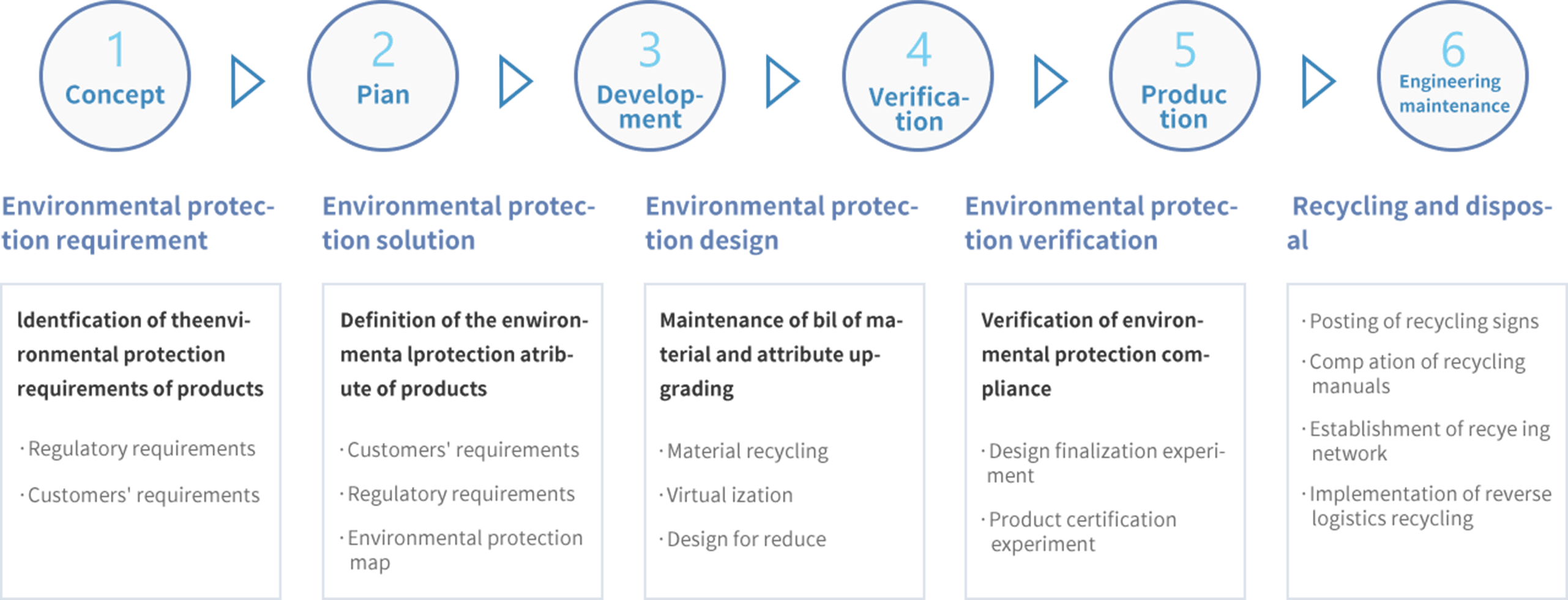
ZTE pays high attention to the environmental performance of products. In accordance with environmental protection laws and regulations as well as customer requirements, ZTE has released the Hazardous Substance Management Manual and Requirements for Banned and Restricted Hazardous Substances to specify the management and control standards for ZTE products and hazardous substances. In response to the EU RoHS Directive, ZTE started pre-research in lead-free soldering in 2004, and comprehensively implemented the directive in 2005. By July 2019, ZTE had comprehensively applied RoHS 2.0 to ensure that its products met the latest EU requirements and maintain the environmental competitiveness of its products. To effectively implement whole process management of hazardous substances within the company, ZTE established an environmental management system aimed at keeping products free of hazardous substances based on the IECQ QC 080000 Hazardous Substance Process Management (HSPM) system and passed the IECQ QC080000 certification in 2010. To meet the requirements of high-end market customers in terms of corporate social responsibility (CSR), ZTE established the capability to deliver halogen-free mobile phones and terminal products in 2012 and was able to eliminate the use of halogen flame retardants in products as required by customers.
Environmental laboratories have been set up to verify the environmental compliance of incoming materials provided by suppliers. Furthermore, the advanced WPA (Windchill Product Analytics) environmental data management system has been effectively integrated with our internal IT system platform. It's designed to systematically verify supplier data, collect data on the toxic substance contents in materials, manage environmental compliance analysis, and ultimately ensure that suppliers meet our material requirements. The company has taken an active part in revising relevant environmental protection standards both at home and abroad. In 2020, ZTE participated in the national standard formulation and comparison test relating to four environmental protection products. We continued to pay attention to and responded to the changes in declarations of RoHS3.0 and REACH SCIP, and continuously improved the capability of our environmental protection laboratories for detecting RoHS, REACH and other chemical substances.
Experts of the electrical and electronic product pollution prevention and control standard working group of the Ministry of
Industry and Information Technology come to ZTE for investigation
On the afternoon of April 14, 2021, experts from the working group of electrical and electronic products of the Ministry of Industry and Information Technology came to ZTE headquarters for investigation and discussion. The purpose of this survey is to support China's high-quality and green development strategies, understand industry requirements in an in-depth way, and discuss how to better support policy implementation and serve the industry at the technical and standardization levels. The expert team first arrived at ZTE on this trip, and conducted in-depth exchanges on the progress and difficulties of ZTE in the fields of hazardous substance restriction management, green product design, and carbon verification. It is hoped that ZTE will give full play to its advantages, play a leading role in promoting green sustainable development of the industry, and continue to work closely with the standard working group to standardize green manufacturing in the future. RoHS testing and certification, environmental protection data management system, and carbon neutralization to further carry out close cooperation.
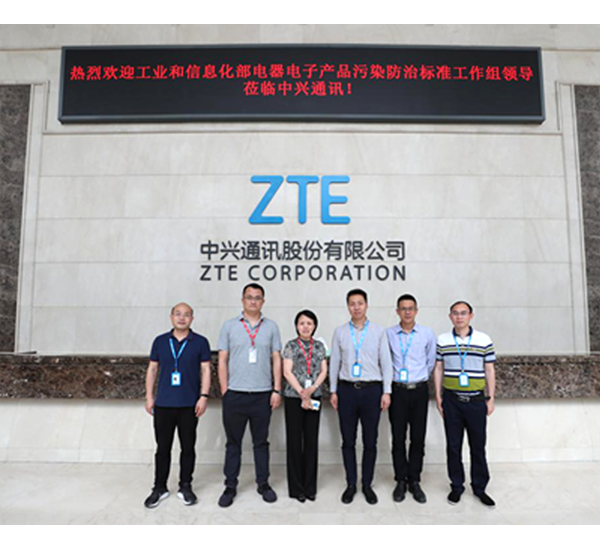
Product Recycling
As an excellent manufacturer in the industry, ZTE is fully aware of its social responsibility in processing and recycling products, "Safety, eco-friendly, and professional" is ZTE's recycling policy. We strictly complie with the laws and regulations concerning waste electronic equipment management wherever it operates, and actively promotes the recycling of used products and resources. Internally, ZTE has established a specialized reverse logistics handling department responsible for recycling and reuse. ZTE has established close partnership with the world's leading environmental service providers and joined the recycling systems of Germany, Italy, France, Britain, Slovakia, Czech, Austria, Austria, Bulgaria, Romania, Spain, and Portugal to set up a worldwide recycled material processing network. The network can provide one-stop disassembly and recycling of telecom equipment all over the world, so that electronic waste can be recycled in an eco-friendly manner.
In today's information society, ZTE attaches great importance to information security. Before recycling, ZTE conducts strict security and environmental assessment on the devices and decide the disposal accordingly, to ensure information security, transparency and traceability. ZTE sets green recycling as the basic requirement for equipment disposal to ensure that the requirements of Chinese and international laws and regulations.
In strict accordance with the regulatory requirements specified in the Basel Convention for the cross-border transfer of hazardous waste, ZTE preferentially works with local service providers in the recycling of waste products. In China, ZTE has set up a general processing platform for recycling at the headquarters in Shenzhen, and processing sub-platforms different regions around the country to provide prompt services. In overseas countries, ZTE joins hands with excellent environmental service providers in Asia, Europe, Latin America, and Africa to set up a global platform for handling recycled materials. The platform can track the whole disposal process of recycled materials, so that all available resources will not be wasted and waste materials can be disposed in an eco- friendly manner. ZTE has joined hands with more than 160 environmental service providers worldwide to create a global green recycling network. In China, we have 5 regional processing platforms and over 10 environmental protection service providers who provide professional and efficient recycling services, with the overall recycling rate reaching 95%. Overseas, more than 150 environmental protection organizations located in Asia, Europe, Latin America, and Africa have established long-term partnerships with ZTE
for providing fast, compliant, and one-stop green recycling services to ensure that the recycling business in each country meets local environmental protection requirements. In addition, ZTE is able to assist in the equipment recycling of operators. For example, in the large-scale relocation and replacement projects of operators in Pakistan, Nigeria, and other countries, ZTE provided one-stop services including equipment disassembly, recycling, and eco-friendly disposal.
In the U.S., ZTE encourages users to recycle the used mobile phones through the official website (https://zteusa.hobi.com/) of ZTE USA, and signs a local e-waste recycling company to provide customers with services that meet the recycling requirements of different states.
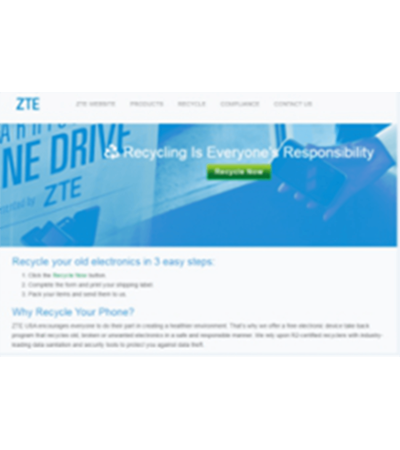
In China, ZTE provides customers with convenient repair and recycling services,ZTE encourages users to trade in their old products for new ones through the official website of mobile devices (web: www.ztemall.com; mobile app: ZTE Market), and partners with Chinese recycling companies to promote recycling.
Green Packaging
We actively use green packaging, replacing wood with paper and wood with iron to promote the reuse of packaging materials and reduce resource consumption. Over 70% of our cabinet products are packaged in paper cartons, 98% of our power supply and wireless products are packaged in paper cartons, and over 70% of small products are collectively packaged with iron pallets and paper pallets instead of the wood ones. We keep seeking new packaging materials using less resources, such as the FSC-certified paper, vegetable-based inks, and lightweight pallets. All these efforts have reduced emissions from transportation and 30% of the shipping weight.
Join China's Alliance for Producer Responsibilities to Extend Industrial Technology Innovation
The Fourteenth International Conference on Extended Responsibility System of Electrical and Electronic Products and Recycling and Handling Technology (2021) and 2020 China's Discarded Electrical and Electronic Products Recycling and Handling Industry White Paper was held in Changsha on May 13, 2021. The theme of this conference is "Strengthening the Extended Responsibility System of the Manufacturer, Promoting Green Cyclic Low Carbon Development of the Industry." The conference discussed how to coordinate and adapt to the new market environment, how enterprises conduct non-fund business, and how to carry out producer responsibility extension, how to build a "carbon" system, how to consume green goods, and how to promote the sorting system of urban waste and used goods by supply chain. The conference attracted more than 50 experts and scholars, and carefully prepared 35 thematic reports, three hot dialogs, student papers, and the exhibition of green innovation cases of enterprises. As a member unit, ZTE participated in the conference and actively exchanged views with the participating units on the topics of extended producer responsibilities.
